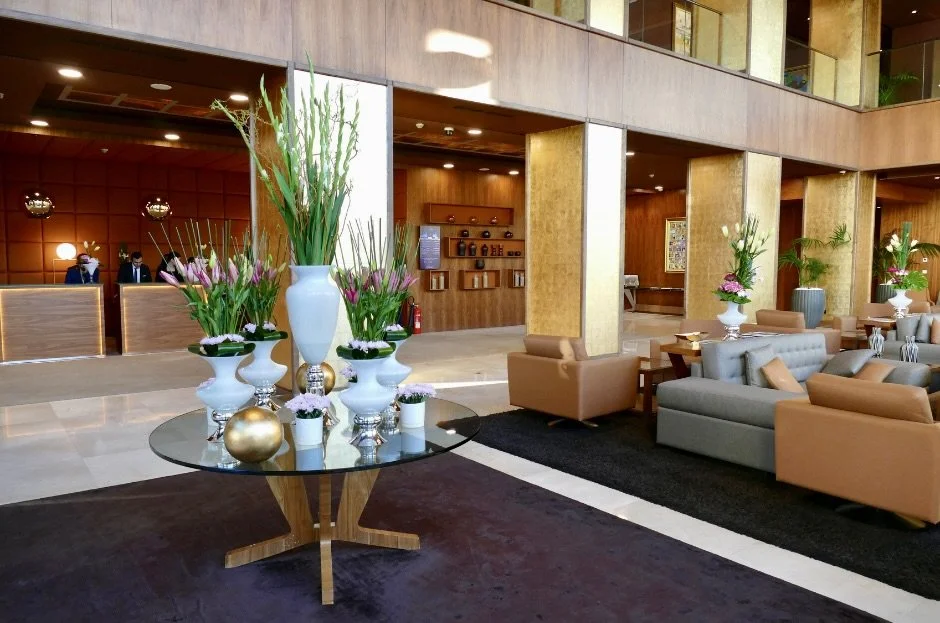How to Make Hotels Inclusive for Neurodivergent Visitors
Hotel lobby with seating
Travel can be exciting — but for many neurodivergent individuals, it can also be overwhelming. New environments, unpredictable noises, strong smells, bright lights, and changes to routine can all contribute to sensory overload and anxiety.
For hotels, becoming more inclusive to neurodivergent guests isn’t just about accessibility — it’s about creating comfort, understanding, and choice. With thoughtful adjustments, you can transform your space into one where every guest feels welcome and at ease.
Understanding Neurodiversity in Hospitality
The term neurodiversity refers to the natural variation in how people think, learn, and process the world around them. It includes autism, ADHD, dyslexia, dyspraxia, Tourette’s, and sensory processing differences, among others.
Neurodivergent travellers may experience:
Sensory sensitivities to light, sound, texture, or smell
Anxiety from unexpected changes or lack of predictability
Communication differences or information-processing challenges
Fatigue from constant adjustment in unfamiliar environments
Difficult with findings things or figuring out how things work
Small, proactive measures can make a huge difference — not just for neurodivergent guests, but for everyone.
Practical Steps to Create an Inclusive Hotel
1. Offer Sensory-Inclusive Spaces
Create quiet zones or sensory-calming areas where guests can decompress. Use soft lighting, minimal visual clutter, and neutral tones. Provide clear signage and avoid harsh scents in communal areas. Also consider adult guests who would not feel comfortable in a space designed for children.
2. Provide Clear Information Before and During Stays
Predictability reduces anxiety. Offer detailed information on your website about:
Room layouts and photos
Noise levels (e.g., near lifts or restaurants)
Check-in and check-out processes
Sensory features (lighting, air conditioning, etc.)
You can also include a downloadable “What to Expect” guide for guests who prefer structure and familiarity. This can include information like the breakfast menu and opening and closing times for facilities.
3. Train Your Staff in Neuro-Inclusive Communication
Staff awareness is key. Provide training so your team understands how to
Recognise sensory distress
Communicate calmly and clearly
Offer flexible options (e.g., quiet dining areas, early check-ins, slower-paced interactions)
Empathy and patience go a long way toward creating a welcoming experience.
4. Design with Sensory Awareness in Mind
Use dimmable lighting and avoid flickering bulbs.
Choose calming colour palettes and reduce visual clutter in rooms.
Offer blackout curtains and soundproofing where possible.
Provide the option to adjust temperature, lighting, or noise levels.
Provide clear instructions on how things work, e.g. how to turn on the TV
5. Offer Personalisation and Choice
Allow guests to tailor their stay — for example:
Requesting a quiet room or ground floor location
Flexibility on room amenities, for example keep unscented toiletries for guests who may request this
Requesting housekeeping at a preferred time or opting out entirely
This flexibility empowers guests to manage their environment in a way that suits them best.
Moving from Awareness to Action
Inclusivity isn’t a one-time adjustment — it’s an ongoing commitment. By embedding sensory awareness and neurodiversity training into your hospitality approach, you not only meet accessibility expectations but also show genuine care for your guests’ wellbeing.
Creating neuro-inclusive spaces enhances comfort for everyone — families, business travellers, and guests who simply value calm, thoughtful design.
How I Can Help
With over two decades of clinical experience and lived understanding of sensory differences, I work with hospitality teams to create sensory-inclusive environments and staff training programmes.
Whether you’re designing new spaces or improving existing ones, I can help your venue become a place where every guest feels seen, supported, and welcome.
Get in touch to learn how sensory inclusion can elevate your guest experience — and set your hotel apart.
